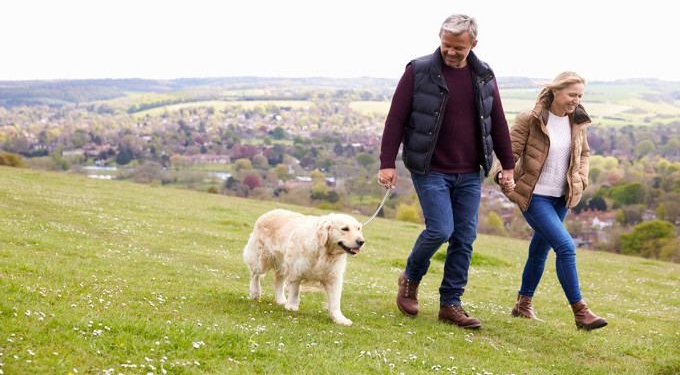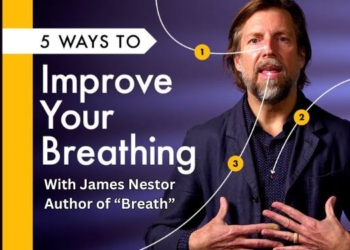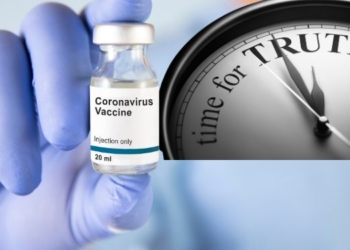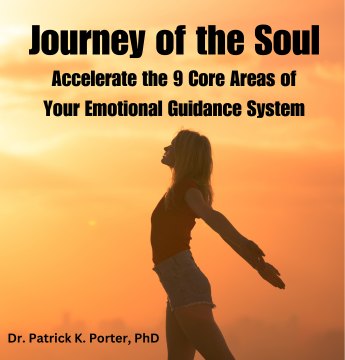Video Source: Body Hub
By Dr. Joseph Mercola | mercola.com
STORY AT-A-GLANCE
- According to the World Health Organization, inactivity is the fourth biggest killer of adults worldwide, responsible for 5.1% to 12.5% (average 9%) of premature deaths, and walking more could go a long way toward reducing this risk
- The recommendation to walk at least 10,000 steps a day is not based on science; it came from a Japanese marketing campaign launched in 1965 to promote the Manpo-kei pedometer, a brand name that translates to “10,000 steps meter”
- The research aimed at determining just how many steps you need to take to lower your risk of early death suggests older individuals can get away with as few as 4,400 steps a day
- Compared to women who averaged 2,718 steps a day, women who walked 4,363 steps per day were 41% less likely to die in the next four years, and taking 5,905 steps was associated with a 46% lower mortality risk. Women who took 8,442 steps were 58% less likely to die in the next four years, but additional analysis revealed benefits maxed out around 7,500 steps per day
- Higher intensities were also associated with lower risks of mortality. However, after adjustments for the number of steps taken each day, this correlation more or less vanished
Most adults spend 10 hours or more each day sitting, and research1,2 shows this level of inactivity cannot be counteracted with a workout at the end of the day. To maintain health, you really need mild but near-continuous movement throughout your waking hours.
One strategy that has been shown to have a positive impact is simply to stand up more. Increasing your daily walking is another key strategy that pays significant dividends, both short term, and long term.
According to the World Health Organization, inactivity is the fourth biggest killer of adults worldwide, responsible for 5.1% to 12.5% (average 9%) of premature deaths,3,4 and walking more could go a long way toward reducing this risk. But just how long do your treks need to be? A common recommendation is 10,000 steps a day, but where did that number come from?
The obscure origins of the 10,000 step recommendation
If you wear a fitness tracker, there's a good chance you're counting your steps. There's also a good chance that your daily goal is to reach 10,000 — the magic number that seemed to appear out of thin air. That number does have an origin, but it didn't come from health studies or scientific research.
The idea of walking at least 10,000 steps a day actually comes from a Japanese marketing campaign by the Yamasa Clock and Instrument Company, launched in 1965 to promote its Manpo-kei pedometer, a brand name that translates to “10,000 steps meter.”5
Companies in the United States adopted the idea more recently to help promote their own fitness trackers. So, if the number 10,000 wasn't scientifically determined, how many steps should you actually aim for each day? Researcher I-Min Lee of Brigham and Women's Hospital set out to find the answer.
How many steps a day do you need for health and longevity?
Lee and her colleagues designed a study6,7,8,9,10 that included 18,289 women from the Women's Health Study aged between 62 to 101 with a mean age of 72, who agreed to wear an accelerometer during waking hours for seven days.
Of these, 16,741 wore the devices as instructed and returned them for data analysis. Data included the total number of steps per day, as well as several measures of intensity. The main outcome measure was all-cause mortality. The study, published online in May 2019 in JAMA Internal Medicine, showed that compared to women who took an average of 2,718 steps:11
- Women who took 4,363 steps [median count] per day were 41% less likely to die in the next four years
- Women who took 5,905 steps 46% less likely to die in the next four years
- Women who took 8,442 steps were 58% less likely to die in the next four years
At first glance, it appears more is better, but it turns out there is a Goldilocks zone after all. Additional analysis revealed benefits maxed out around 7,500 steps per day. In other words, the benefits progressively increased between approximately 4,400 and 7,500 steps, at which point they leveled off.
Step count matters more than intensity for the elderly
Higher intensities were also associated with lower risks of mortality. However, after adjustments for the number of steps taken each day, this correlation more or less vanished. As concluded by the authors:12
“Among older women, as few as approximately 4400 steps/d was significantly related to lower mortality rates compared with approximately 2700 steps/d.
With more steps per day, mortality rates progressively decreased before leveling at approximately 7500 steps/d. The stepping intensity was not clearly related to lower mortality rates after accounting for total steps per day.”
Limitations of the study, which could have influenced results, include the accuracy of the step count (step trackers are not foolproof), and the fact that the researchers did not take into account other types of movement or exercise, such as gardening.
It also did not look at any other potential benefits beyond mortality rates, nor is it clear if the results will apply equally to men and younger individuals. Additional research would need to be done to clarify those questions.
Many studies confirm walking boosts health and longevity
While it's easy to say that something is better than nothing when it comes to staying active, research does show there's typically a minimum level of activity required before you notice any discernible difference. Most studies also show that more activity is better than less — up to a point.
In other words, it's important to get the dosage right (although this dosage does vary between studies and can be hard to pin down). Several previous studies have confirmed various measures of walking impart valuable health benefits and protect against many of the most common killers. For example:
| Research13 published January 2018 in the American Journal of Preventive Medicine found that as little as 120 minutes of walking per week may reduce mortality risk in older adults, compared to inactivity.
Meeting or doubling the activity guidelines of 150 minutes of moderate activity per week in the form of walking lowered all-cause mortality by 20%. According to the authors, “Walking was most strongly associated with respiratory disease mortality followed by cardiovascular disease mortality and then cancer mortality.” |
| Another 2018 study14 in the British Journal of Sports Medicine, which included 50,225 walkers in the U.K., found walking pace is associated with premature mortality risk, but whether this is independent of the total activity volume remains unclear.
Compared to slow walking, walking at a self-reported average pace was associated with a 20% (on average) reduced risk of all-cause mortality and a 24% reduced risk of cardiovascular disease mortality. A brisk pace reduced all-cause mortality by 24% and cardiovascular disease mortality by 21%. |
| Research15,16 published in 2012 found brisk walking improved life expectancy regardless of body weight. According to the authors:
“A physical activity level … equivalent to brisk walking for up to 75 min/wk, was associated with a gain of 1.8 y in life expectancy relative to no leisure time activity. Higher levels of physical activity were associated with greater gains in life expectancy, with a gain of 4.5 y at the highest level … equivalent to brisk walking for 450+ min/wk. Substantial gains were also observed in each BMI group. In joint analyses, being active … and normal weight (BMI 18.5–24.9) was associated with a gain of 7.2 y of life compared to being inactive and obese (BMI 35.0+).” |
| Smokers may also increase their life span by nearly four years by engaging in physical activity such as walking, according to data presented at the World Congress of Cardiology in 2012. Former smokers who kept up their physical activity increased their life expectancy by 5.6 years on average, reducing their all-cause mortality risk by 43%, Medical News Today reported.17
Smokers who were physically active were also 55% more likely to quit smoking than those who remained inactive, and 43% less likely to relapse once they quit. A Norwegian study18 published in 2015 also showed that regular exercise is as important as quitting smoking if you want to reduce your mortality risk. About 5,738 older men were followed for up to 12 years in this study, and those who got 30 minutes of exercise — even if all they did was light walking — six days a week, reduced their risk of death by approximately 40%. Compared to those who were sedentary, those getting moderate to vigorous activity lived about five years longer. Getting less than one hour of light activity per week had no effect on mortality in this study, again highlighting the importance of getting the “dosage” right if you want to live longer. |
| A 2003 study19 found that, compared to inactive individuals, adults with Type 2 diabetes who walked at least two hours per week had a 39% lower risk of death and a 34% lower risk of death from cardiovascular disease. Walking for three to four hours each week had the greatest effect, lowering all-cause mortality by 64%.
According to the authors, “Walking was associated with lower mortality across a diverse spectrum of adults with diabetes. One death per year may be preventable for every 61 people who could be persuaded to walk at least 2 h/wk.” Similarly, other studies have also confirmed walking improves glycemic and blood pressure control in those with Type 2 diabetes,20 and lowers diabetics' risk of death from cardiovascular disease.21 |
| Another group of patients known to benefit from walking is those with obstructive pulmonary disease (COPD). In one study, COPD patients who walked 2 miles a day or more cut their chances of hospitalization from a severe episode by about half.22,23 |
| Research24 published in 2014 found daily walking reduced the risk of stroke in men over the age of 60 in a more or less dose-dependent manner, independent of walking pace.
Compared to those who walked three hours or less per week, men who walked four to seven hours each week had an 11% lower risk of stroke. Walking eight to 14 hours lowered stroke risk by 37%; walking 15 to 21 hours lowered the risk by 32% and walking more than 22 hours lowered it by 64%. |
Walking can be a high-intensity activity
Walking can also be an excellent entry into higher intensity training, regardless of your age and fitness level, as demonstrated by Japanese research25,26 showing a combination of gentle strolling and fast walking provides greater fitness benefits than walking at a steady pace.
The walking program they developed for Japanese seniors consisted of repeated intervals of three minutes of fast walking followed by three minutes of slow strolling. Completing five sets of these intervals, totaling 30 minutes of walking, at least three times a week, led to significant improvements in aerobic fitness, leg strength, and blood pressure.
While many studies suggest distance is the No. 1 factor determining health benefits such as longevity, there's ample evidence27 showing intensity does play a role, and can boost benefits, at least to some degree. At the bare minimum, higher intensity activities are more effective, timewise, allowing you to reap similar benefits as longer, slower workouts in a shorter amount of time.
Everyone can benefit from standing and walking more each day
It's important to recognize that chronic sitting is an independent risk factor for chronic disease and early death, even if you exercise,28,29 and significantly raises your risk of several lethal conditions.30 As noted in a June 2018 study31,32 in the American Journal of Epidemiology:
“[P]rolonged leisure-time sitting (≥6 vs. <3 hours per day) was associated with a higher risk of mortality from all causes, cardiovascular disease … cancer, diabetes, kidney disease, suicide, chronic obstructive pulmonary disease, pneumonitis due to solids and liquids, liver, peptic ulcer and other digestive diseases, Parkinson disease, Alzheimer disease, nervous disorders, and musculoskeletal disorders.”
And, while recent research33 refute findings suggesting chronic sitting is right on par with smoking in terms of mortality risk, it's quite clear it's a significant (and modifiable) risk factor for chronic ill health and early death, just as smoking is.
According to Dr. James Levine, co-director of Obesity Solutions at Mayo Clinic in Phoenix and Arizona State University, you need at least 10 minutes of movement for every hour you sit down.
Research presented at the Canadian Cardiovascular Congress in 2018 showed patients with heart disease need to interrupt their sitting every 20 minutes to perform some form of physical activity for seven minutes. In a press release by the European Society of Cardiology, study author Dr. Ailar Ramadi, faculty of rehabilitation medicine, University of Alberta, Edmonton, Canada said:34
“There is a lot of evidence now that sitting for long periods is bad for health. Our study suggests that during each hour of sitting time, heart patients should take three breaks which add up to 21 minutes of light physical activity. This will expend 770 kcal a day, an amount associated with a lower risk of premature death.”
Earlier findings, presented at the EuroPRevent 2016 meeting, found that, compared to inactivity, getting just 15 minutes of physical activity per day was associated with a 22% lower risk of death in the elderly.35
Taking 10,000 to 15,000 steps a day is probably a good idea
According to research36,37 published in the journal Nature in 2017, American adults take on average 4,774 steps daily. The worldwide average was found to be 4,961 steps a day, based on data collected from accelerometry readings from 717,527 individuals' smartphones. Hong Kong residents came in on top, with an average of 6,880 steps a day.
Considering the poor health of Americans, it seems this average step count simply isn't cutting it. If it did, it should somehow be reflected in other disease and obesity statistics. So, while there may not be a scientific basis for the 10,000 to 15,000 step-a-day recommendation, I believe it's still a good one.
A 2004 study38 assessing physical activity levels and health outcomes in an Amish community found men took an average of 18,425 steps per day and women an average 14,196 steps. Interestingly, 25% of the men and 27% of the women were still overweight, and 9% of the women were obese, showing physical activity is not a foolproof way to ensure a healthy weight.
As a general rule, I recommend limiting your sitting to less than three hours a day and to make it a point to walk more every day. I also recommend walking in addition to any other fitness routine you may have. And, while seniors may benefit from as little as 4,400 steps, as demonstrated in the featured JAMA Internal Medicine study,39 chances are younger individuals need far more.















![Everything You Ever Wanted to Know About 9/11 Conspiracy Theory in Under 5 Minutes [VIDEO] | by James Corbett](https://consciouslifenews.com/wp-content/uploads/2018/09/911-a-conspiracy-theory-120x86.jpg)
